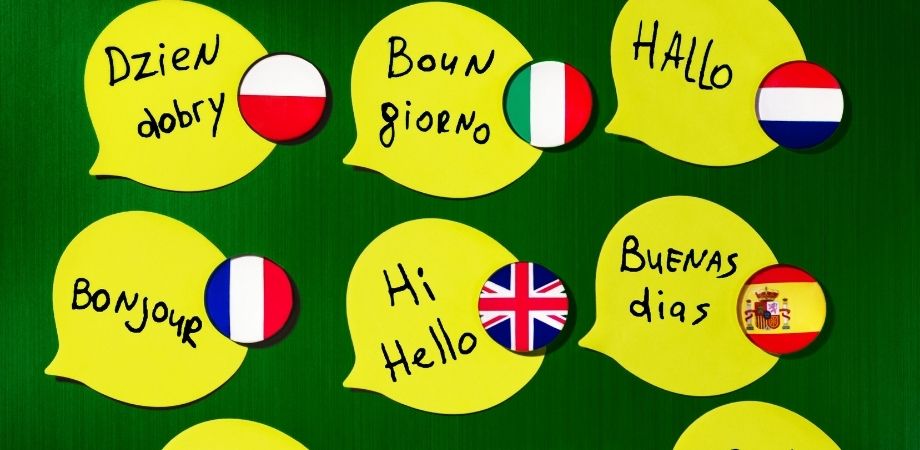The Romance languages, a captivating family of tongues, owe their origins to the Latin spoken in ancient Rome, encapsulating centuries of history and cultural evolution. As Latin was carried across Europe by the expansive reach of the Roman Empire, it branched off into distinct yet interconnected languages such as Italian, Spanish, Portuguese, French, Romanian, and Catalan. Each language, while sharing a foundational lineage, reveals unique traits and allure, mirroring the diverse histories and cultures of their respective regions. Delving into the Romance languages not only offers a voyage through the annals of time but also highlights the significance of Latin’s legacy on modern communication. This exploration is enriched by translation services, bridging linguistic gaps and fostering a deeper appreciation of the nuanced beauty inherent in these languages.
Discover the Enchanting World of Romance Languages

Dive into the captivating history of Romance languages, a family of languages that trace their origins back to Latin, the dominant language of the ancient Roman Empire. Spanning from the 3rd century BCE to the 8th century CE, Latin was the cornerstone of communication within the vast territories of Rome. As the Roman Empire expanded, Latin evolved, giving rise to diverse dialects that eventually morphed into the distinct Romance languages we recognize today: Italian, Romanian, Spanish, Portuguese, French, and Catalan.
The journey from Latin to the Romance languages illustrates a fascinating tale of linguistic evolution, as these dialects spread across Europe with the movements of Roman settlers. Despite their shared foundation, the Romance languages showcase a rich tapestry of similarities and unique differences, shaped by centuries of cultural exchanges and regional developments.
What Are Romance Languages?

Languages of Romance, frequently referred to as Vulgar Latin, are recognized as a subset within the broader Indo-European language family. Noteworthy and widely spoken among these Roman languages are Spanish, Italian, Portuguese, French, and Romanian. Moreover, languages such as Sardinian, Occitan, and Catalan are categorized as languages of romance within the regional dialects.
Globally, more than 900 million individuals communicate in languages of Romance as their mother tongue, primarily in areas spanning America, Europe, and Africa. The prevailing Roman languages in terms of widespread usage comprise Spanish (543 million speakers), Portuguese (258 million), French (267 million), Italian (68 million), and Romanian (24 million).
Unravel the Roman Legacy: Understanding the Romance Languages
The term “Roman” in Romance languages is a nod to their historical and grammatical lineage, linking them directly to the ancient Roman civilization. This connection not only highlights their common ancestry but also emphasizes the linguistic intricacies that these languages share. However, the individual characteristics of Italian, Romanian, Spanish, Portuguese, French, and Catalan reveal the influence of local cultures and historical contexts on their development.
In exploring the Romance languages, one uncovers a world where language acts as a living monument to the Roman Empire’s reach and influence. Each language, while rooted in Latin, has flourished into its own unique entity, reflecting the diverse tapestry of European history and culture.
For language enthusiasts and scholars alike, the study of Romance languages offers an opportunity to delve into their linguistic roots and distinctive features. Whether you’re looking to translate between these languages or simply wish to learn more about their heritage, understanding the Romance languages opens up a gateway to a rich cultural and historical landscape.
Embrace the linguistic legacy of the Roman Empire and explore the vibrant world of Romance languages. Discover how from one ancient language, Latin, emerged a family of languages that continue to fascinate and connect people across continents and generations.
Romance languages, renowned for their melodic charm and cultural richness, have not only evolved distinct regional variations but have also interacted with each other over centuries. Notably, interactions between Ibero-Romance, represented by Spanish, and Gallo-Romance, embodied by French, have shaped linguistic landscapes. Despite their diversity, these languages share fundamental traits such as grammar, vocabulary, and cultural ties. Romance languages are characterized by their frequent use of vowels, contributing to their lyrical quality through tonal patterns and accents. It’s these very characteristics that have contributed to their enduring popularity. Below, we delve into the top six Romance languages, each offering its own unique allure and significance in the tapestry of human communication.
6 Most Popular Romance Languages
Languages of Romance, in addition to developing local variations, have undergone interaction among different language variants over time, especially between Ibero-Romance (Spanish) and Gallo-Romance (French). These languages share common features, including grammar, vocabulary, and cultural connections. Romance languages tend to use vowels frequently and create a pleasing melody through tonal patterns and accentuations. These characteristics are what make Romance languages so popular. The six most popular Romance languages are listed below:
1. Spanish
Spanish, or español, is one of the most widely spoken languages globally, with over 480 million native speakers. It is the official language in 20 countries, primarily in Spain and Latin America. Spanish originated in the Iberian Peninsula and evolved from Vulgar Latin with influences from Arabic, Celtic, and indigenous languages. It has a rich literary tradition, including works by Miguel de Cervantes and Gabriel García Márquez.
2. French
French, or français, is spoken by around 77 million people worldwide and serves as an official language in 29 countries. It originated in France and evolved from Vulgar Latin with influences from Celtic and Germanic languages. French is renowned for its contributions to literature, art, philosophy, and diplomacy. It is also considered the language of love and is known for its melodious sound.
3. Portuguese
Portuguese, or português, is spoken by more than 220 million people globally, primarily in Portugal, Brazil, and former Portuguese colonies in Africa and Asia. It evolved from Galician-Portuguese in the medieval Kingdom of Galicia and Portugal and has significant influences from Arabic and indigenous languages. Portuguese is known for its diverse dialects and its vibrant literature, including works by Fernando Pessoa and Luís de Camões.
4. Italian
Italian, or italiano, is predominantly spoken in Italy, Switzerland, and some parts of Croatia and Slovenia. With around 85 million speakers, it has a significant cultural and historical legacy. Italian evolved from Vulgar Latin in the Italian Peninsula and is known for its musicality and poetic expression. It has influenced various fields, including opera, cuisine, and fashion.
5. Romanian
Romanian, or română, is spoken by approximately 24-26 million people as a native language, primarily in Romania and Moldova. It is an Eastern Romance language with influences from Latin, Slavic, and other languages. Romanian has a unique phonetic and lexical structure compared to other Romance languages due to its historical development in the Eastern European region.
6. Catalan
Catalan, or català, is primarily spoken in Catalonia, Valencia, the Balearic Islands, and parts of France and Italy. It evolved from Vulgar Latin in the medieval Principality of Catalonia and has influences from Latin, Arabic, French, and Occitan. Despite using the Latin alphabet, Catalan sometimes incorporates special characters, making it a bit challenging for those unfamiliar with its writing system. This feature sets Catalan apart from other Romance languages. Catalan has a distinct writing system with special characters and is known for its rich literary tradition, including works by Joan Maragall and Jacint Verdaguer. Obtaining assistance from local localization services is crucial for translating this language, considering the importance of preserving cultural nuances.



